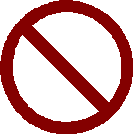Anti-Spam Software

Once your e-mail address is known by a spammer it is passed around and the number of spam e-mails escalates. It is important not to enter your e-mail address into web pages where you do not trust the owner of the site. Doing so allows your e-mail address to be sold on.
If you do start to receive spam there are several products available to remove it. Some, such as the McAfee and Symantec products, come as part of an Internet security suite with anti-virus and anti-spyware products. Others, like MailWasher and SpamCop, come as stand-alone products. MailWasher even has a free edition.
All the programs work in the same way. E-mail is scanned for recognised phrases or sender's address. Mail that is recognised as being spam is either deleted or sent to a different folder in your e-mail software to be checked. Your e-mail supplier or software may also have a built-in anti-spam feature.
Anti-spam software is usually adaptive. If spam e-mail comes in you can mark it as spam. If other, similar, e-mail is sent it can be automatically marked as spam. By using the power of the Internet, mail that is marked as spam is notified to the vendor's web site. If many people mark it as spam it can be added to the list of known spam and everyone who has the software will automatically reject the spam.
If you run this type of software you may initially lose some genuine mail. By adjusting the security settings to suit you and your family you will be able to receive wanted mail and stop the spam from getting in. Most anti-spam software allows you to specify a list of friends whose e-mails will always be accepted.
Other anti-spam programs include the following: (Click on a link to visit the home page for the relevant product.)
Next: Spam Quiz1